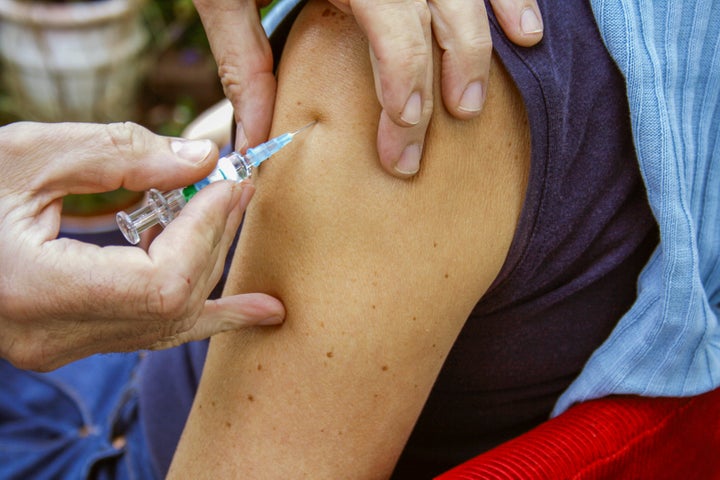
(Reuters Health) - Parental politics may influence whether teens get recommended vaccinations, according to a U.S. study.
Dividing states into red and blue based on how they voted in the 2012 presidential elections, researchers found that in that year, adolescents in blue states were significantly more likely to have received three important vaccines recommended for 11 to 12 year olds.
“These associations are important because they demonstrate that there are broader forces associated with political affiliation that may influence acceptance of immunizations for adolescent children,” said senior author Linda M. Niccolai of the Yale School of Public Health in New Haven. “The decision to immunize a child does not occur in vacuum and is not as straightforward as simply accepting a preventive medical intervention or not.”
Current recommendations include human papillomavirus (HPV) vaccine, tetanus-diphtheria-acellar pertussis (Tdap) and meningococcal conjugate (MCV4) for boys and girls aged 11 to 12. The researchers used the 2012 National Immunization Survey-Teen to estimate how many teens in each state got at least one dose of these vaccines.
The HPV vaccine, which was recommended for girls in 2006 and boys in 2011, protects against cancers caused by HPV infection, which affects about one in four Americans. The Centers for Disease Control and Prevention recommends boys and girls get all three shots of the HPV vaccine series.
The Tdap vaccine booster helps protect preteens from infections they were vaccinated against as children. The MCV4 vaccine protects against a rare but dangerous bacterial infection of the brain.
“The HPV, Tdap, and MCV4 vaccines that we have in the U.S. have very strong safety records and effectively prevent several important diseases,” Niccolai told Reuters Health by email. “They are recommended for all adolescents, so there is no downside to these vaccinations,” and they are covered by insurance or the federal vaccine program for nearly all children.
The researchers adjusted for factors that could influence vaccination patterns, including income, education, race and ethnicicty and insurance coverage. Then they calculated the median vaccination rates among blue and red states – meaning half of states had rates above the median for their group.
In 2012, Democratic-voting “blue states” had a median of 63 percent coverage for girls and 47 percent coverage for boys for the HPV shot, compared to 56 of girls and 34 percent of boys in Republican-voting “red states.”
For Tdap, blue states had a median of 90 percent vaccine coverage for teens, compared to 85 percent in red states. For MCV4, almost 80 percent of teens in half of blue states had been vaccinated compared to 73 percent in red states, as reported in the American Journal of Public Health.
“We hypothesized there would be differences for HPV, a sexually transmitted infection, perhaps due to social conservatism found in many Republican states,” Niccolai said. “But we also found differences for MCV4 and Tdap, suggesting something else, perhaps related to political affiliation more broadly, that is important.”
Preference for a smaller role of government in personal decision making, typically associated with more Republican views, could lead to individuals rejecting vaccinations that are recommended by federal agencies, she said. But this study alone can’t explain why differences exist between states.
Underlying preferences may drive differences in voting patterns and vaccine behavior between states, said W. David Bradford, the Busbee Chair in Public Policy at the University of Georgia in Atlanta.
“Remember that Democratic-leaning states tend to be on the coasts and by and large have higher incomes,” Bradford said. “The surprising part is that the authors actually control for many of the things that one would first think of as explaining differences in healthy behaviors (median income, education levels, and insurance, for example) and yet even then the impact of political preferences still mattered.”
